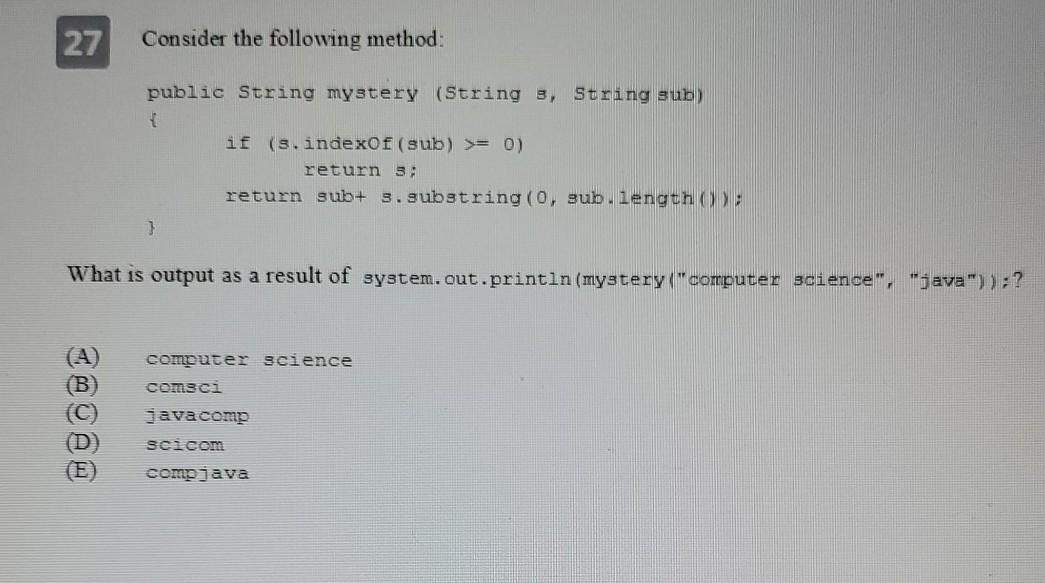Answered step by step
Verified Expert Solution
Question
1 Approved Answer
25 Consider the following code: public void doStuff (String 3) { System.out.println(3. substring(0,1)); } public void doStuff (double i) System.out.println(i / 10); What is output




25 Consider the following code: public void doStuff (String 3) { System.out.println(3. substring(0,1)); } public void doStuff (double i) System.out.println(i / 10); What is output by: dioStuf 543) ; (B) on an N (E) None of the above 26 What is output by the following code? int X = 95: while (x > 50) { System.out.print ( x7 + : if (x 2 == 0) x = 10 else x--, 1 4 1 5 2 6 (A) (B) 5 2 6 3 0 4 3 2 1 0 4 3 0 4 1 5 4 3 2 1 0 6 5 4 3 2 1 0 6 5 4 3 2 1 0 6 5 4 3 2 1 0 6 5 4 3 2 1 0 6 5 4 3 2 1 0 6 5 4 3 2 27 Consider the following method: public String mystery (String 3, String sub) if (s.indexOf(sub) >= 0) return 3 return sub+ 3.substring(0, sub.length: } What is output as a result of system.out.println(mystery("computer science", "java"));? (B) computer science comsci javacomp scicom compjava 28 Consider the following code segment: int a int b = /* value */; / value +/; boolean t = ( a = b); t = (a != b) && t; Which of the following best describes the conditions under which t is true after the code is executed? (B) When a
Step by Step Solution
There are 3 Steps involved in it
Step: 1

Get Instant Access to Expert-Tailored Solutions
See step-by-step solutions with expert insights and AI powered tools for academic success
Step: 2

Step: 3

Ace Your Homework with AI
Get the answers you need in no time with our AI-driven, step-by-step assistance
Get Started


